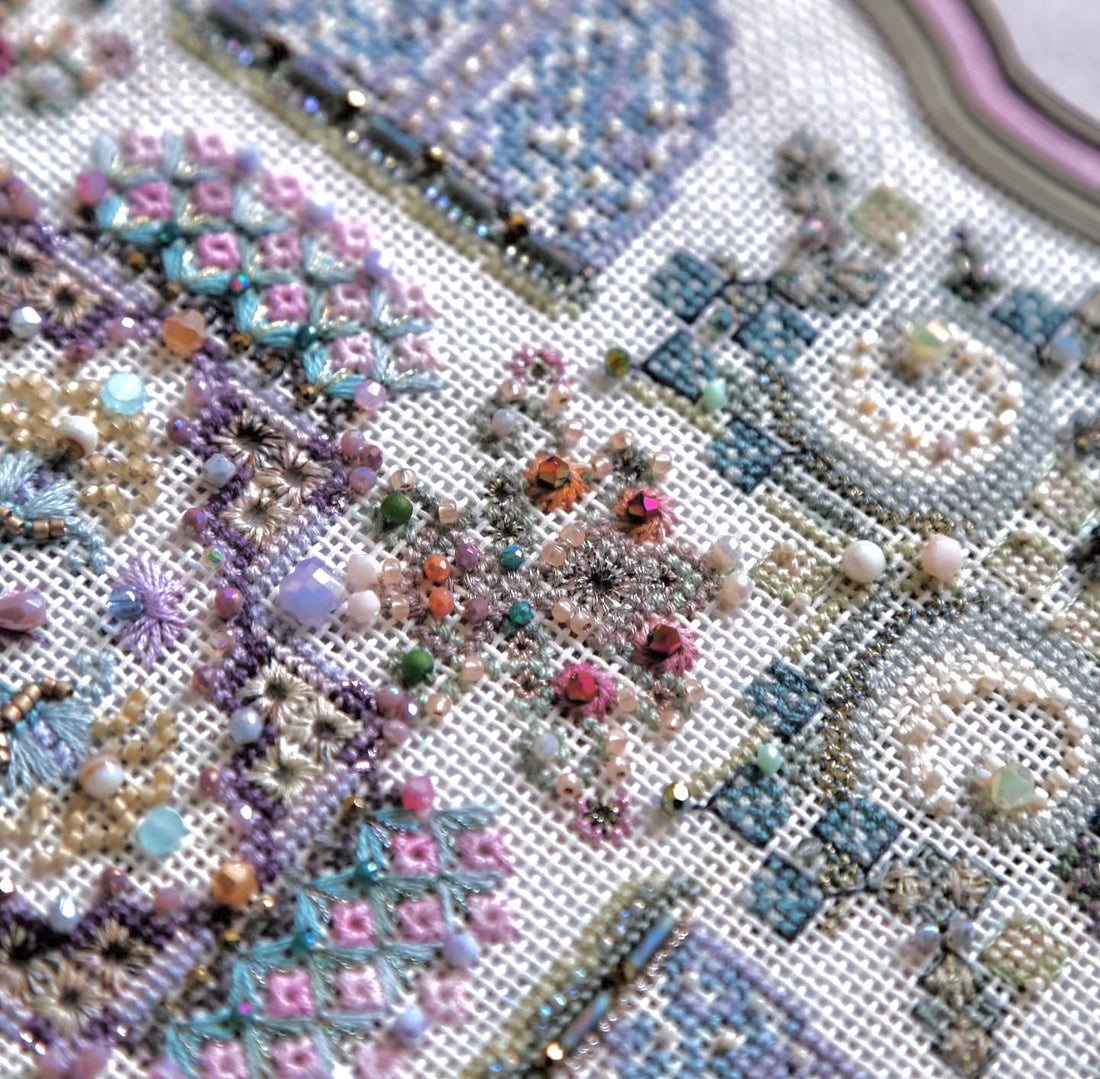
Cross Stitch vs Embroidery: What's the Difference and Which Should You Try?
If you're new to needlecraft, the terms cross stitch and embroidery may seem interchangeable — but they refer to two distinct art forms with different histories, materials, and stitching methods.
In this guide, we’ll break down everything you need to know in the debate of cross stitch vs embroidery, helping you choose which technique suits your creative journey best.

What Is Cross Stitch?
Cross stitch is a form of counted-thread embroidery that uses X-shaped stitches to form a tiled image, often on an even-weave fabric like Aida cloth. Each cross is stitched over a precise number of fabric threads, allowing for pixel-like, grid-based designs that are easy to follow.
Origins of Cross Stitch
Cross stitch dates back over 1,000 years and has been found in ancient Egyptian and Chinese textiles. It became popular in Europe during the 16th century and evolved as a method for young women to practice and showcase their needlework skills.
Why Is Cross Stitch So Popular in DIY Kits?
Walk into any craft store today, and you’ll notice: most DIY stitching kits are cross stitch kits. Why? Because cross stitch is highly beginner-friendly — the pre-printed or charted patterns make it easy to follow, the stitches are repetitive and meditative, and there's less room for error. It's a great way to build confidence with needle and thread before exploring more complex freeform embroidery.
What Is Embroidery?
Embroidery, in a broader sense, refers to the craft of decorating fabric with a needle and thread or yarn, using various stitch techniques like satin stitch, backstitch, chain stitch, and French knots. Unlike cross stitch, embroidery is usually more free-form and can be either counted or surface-based.
Origins of Embroidery
Embroidery has ancient roots and can be traced to China, India, and the Middle East as early as 30,000 BC. It was often used to embellish ceremonial garments, flags, and tapestries, becoming a status symbol in royal and religious attire.
Materials and Fabric: Do They Differ?
Fabric Used
- Cross Stitch: Typically uses Aida cloth or evenweave linen, which has a clear, gridded structure that facilitates precise X-shaped stitches.
- Embroidery: Uses a wider range of fabrics like cotton, linen, muslin, silk, or even denim. The choice depends on the design and stitch style.
Thread and Floss
- Cross Stitch: Commonly uses 6-strand embroidery floss, often split into 2 or 3 strands depending on the fabric count. Brands like DMC or Anchor are industry standards.
- Embroidery: Also uses embroidery floss, but may include other threads like metallic thread, perle cotton, silk ribbon, or yarn for texture and variation.
Stitching Techniques: Structure vs Flow
Cross Stitch Process
- Pattern is pre-designed, often on a charted grid.
- Stitcher counts squares on the fabric and matches to the chart.
- Makes small X-shaped stitches in rows or blocks.
- Often framed or used as wall décor or on cushions.
Best For: Beginners, geometric designs, pixel art-style patterns, meditative stitching.
Embroidery Process
- Design may be pre-printed or freehand-drawn.
- Stitcher chooses from various stitch types for different textures.
- Often includes outlining, filling, and layering techniques.
- Used in fashion (shirts, jackets), home decor, or artistic wall hangings.
Best For: Free expression, texture-rich artwork, complex floral or illustrative designs.
Design Styles and Aesthetics
| Aspect | Cross Stitch | Embroidery |
|---|---|---|
| Look | Pixelated, geometric | Flowing, painterly, textured |
| Patterns | Pre-charted, counted | Can be freeform or transferred designs |
| Application | Framed pieces, bookmarks | Clothing, bags, tableware, art pieces |
| Flexibility | Less (limited to X shapes) | More (dozens of stitch types) |
Which One Should You Try First?
If you love structured patterns, meditative repetition, and following a clear plan — cross stitch is a fantastic entry point.
If you prefer expressive, freeform creativity and want to explore texture, layers, and artistry — go for embroidery.
Many artists start with cross stitch to build control and then expand into freestyle embroidery as their confidence grows.
Final Thoughts: Cross Stitch vs Embroidery
The real answer in the cross stitch vs embroidery debate isn’t about which one is better — it’s about which one fits your style and mood.
Both crafts are deeply satisfying, tactile art forms that connect you with centuries of textile tradition. Whether you're stitching tiny Xs or blending thread like paint, the goal is the same: creativity, focus, and beauty.
Explore More
- Curious about what’s trending in modern embroidery and fashion? Visit our full blog resource hub.
- Looking for timeless, fabric-focused products? Browse our curated T-shirt and lifestyle collection.

